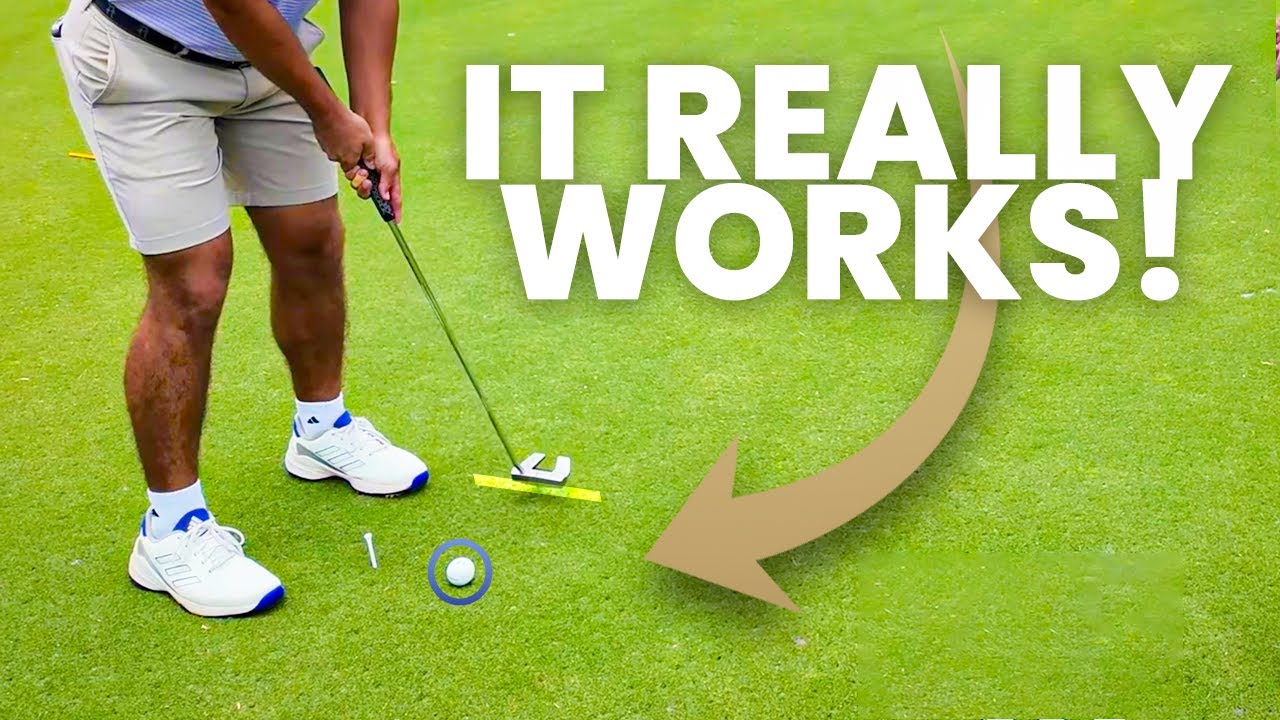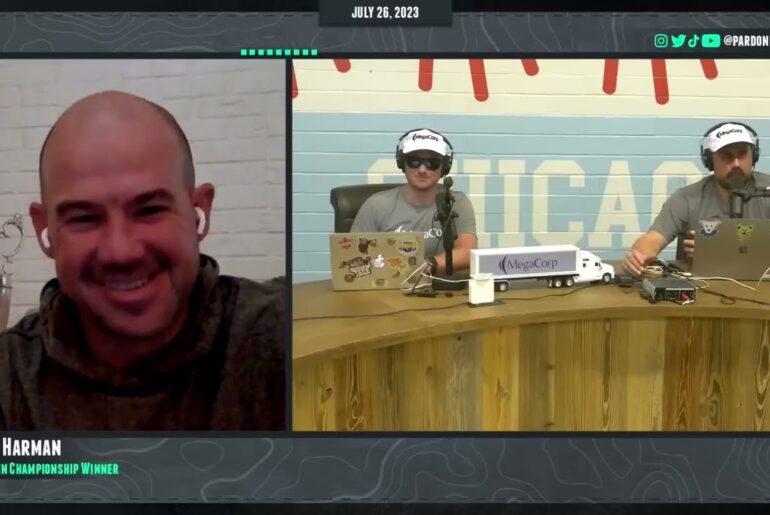This revolutionary putting stroke technique that will help you never 3 putt again by mastering proper putting tempo and eliminating acceleration through impact is easier than you think. Train like a Tour Pro: https://skipkendallgolf.com
Follow Me On Instagram:
https://www.instagram.com/skip.kendall
⏰ 0:00 – The putting revolution that changed everything
🎯 1:08 – Setting up the metronome for perfect putting tempo
📏 2:08 – Why acceleration destroys your putting stroke
🎵 2:48 – The 3 problems with accelerating through impact
⚡ 3:23 – Creating momentum in the backstroke technique
🏌️ 3:54 – Pro examples: Luke Donald and Patrick Cantlay’s method
📐 4:42 – Length and speed control for distance putting
🎪 5:43 – Practice drills to develop the new stroke feel
Learn the game-changing putting method that’s revolutionized how tour pros approach the greens. This video reveals why traditional acceleration through impact causes balls to bounce, skid, and wobble – and shows you the simple “drop the putter” technique that creates perfect roll every time.
What You’ll Learn:
-The revolutionary putting stroke that eliminates 3-putts by creating proper ball roll
-How to use putting tempo with a metronome to develop consistent rhythm
-Why accelerating through impact causes three critical putting problems
-The exact backstroke length and speed needed for different distances
-Professional examples from Luke Donald, Patrick Cantlay, and Scottie Scheffler
-How to create momentum in your backstroke instead of accelerating through impact
-The proper setup and stroke control system for any green speed
-Practice techniques to master the “drop the putter” method
#Never3PuttAgain #PuttingStroke #PuttingTempo #GolfPuttingTips #GolfInstruction
So, let me explain to you the new revolution in golf. I had something to do with it about 5 and a half years ago. A lot of my elite players were what I call cheating the metronome. They would take the putter back way too slow, right? And then to get to the second beat, they accelerate. Accelerate. Three bad things happen when you accelerate. The ball bounces off the face. It skids. It wobbles. All you’re doing is create enough speed in the back swing when you just drop the putter on the ball. Milwaukee zone Skip Kendall. Skip Kendall. Skip Kendall is five under today at the ninth. Ships in for Bernie. He’s tied for third. Two shots off the lead. Carson, so section two of my putting system is what I call stroke control. Usually what I would want you to do generally is set up a grid. So, you know, this green isn’t that big, but I have two sticks at 45 ft and I have two increments of 15 ft apart. Okay? So obviously this is 15 feet from here to that stick. And that is the thing that I want you to we’re gonna we’re gonna kind of dial this in for how everything works. Mhm. Um have you you’ve used a metronome before, right? Yeah. Yeah. Yeah. So what do you usually have your cadence on? I think 74. Okay. 74. So I’m going to put it on 74. You know it’s two beats per stroke. Yeah. And what I want you to do is get into that really good setup that we were doing. Everything’s still the same, right? But let’s just hit a couple of 15footers. And I’m going to turn on the metronome, though. Okay. And and just kind of show me, you know, what you’re doing. Obviously, with the with, you know, the new setup, I want to, you know, just, you know, see that what I what I’d like you to do really is I’d like you to count, you know, one is back, two is impact. Yep. You know, okay. So, when you’re doing this Yep. Good. Yes. Excellent. There you go. One, two. One, one, two, okay, one, two. Sweet. Oh, nearly hit it. All right, I’m going to put this down. Okay, because this needs to become your new shape of stroke, right? Okay, so let me explain to you the new revolution in golf. Um, I like to think that I had something to do with it about five and a half years ago. A lot of my elite players were what I call cheating the metronome. What they were doing was they’d be in their count, but whatever. They they would take the putter back way too slow, right? And then to get to the second beat, they accelerate. Accelerate. Yeah. Well, we proved about five and a half years ago years ago that any kind of acceleration through impact is not what you’re looking for. All you’re doing is looking for to create enough speed, enough speed in the back swing and the correct distance to make sure you have enough energy when you just drop the putter on the ball. It has enough energy to propel it the distance that it wants to go. Three bad things happen when you accelerate. Number one, the ball bounces off the face. Yep. It skids for too long. And then when the ball actually starts rolling, it doesn’t roll on its axis. It wobbles. Mhm. It’s all over the place. And so consequently, you don’t get a real consistent roll. And yeah, can the ball go in the hole? Yes. I would want to bet you coming down the stretch of a tournament though if I was playing against you because I know that that stroke probably is not going to make the putts that you’re going to need to make to maybe win a tournament. So the whole idea is to create that momentum though on the back swing. So basically all you’re doing when you rock your shoulders is you’re just dropping the putter on the ball. Yep. So that’s why this is set up here. This impact line is right here. So this is a 15 foot putt today. Yep. Basically the stimp is probably around a nine, you know. So, in that case, you want to bring the putter the face of the putter back to 15 in. Mhm. All right. Now, when you go through, you’re going to try to stop this before it hits the front bracket. Now, you don’t I don’t want you to try to stop it. Actually, I want it to stop. Yeah. But that’s only what you’re going to do in the stroke. Okay. Yeah. I’ve always thought about that because you get guys like former world number one Luke Donald who one of the best putters on tour does it and then nowadays, uh, Patrick Hley. Absolutely. Patrick Cam Smith on on the live tour, beautiful putting stroke, you know what I mean? But all the guys are doing it now all the way down. I mean, Scotty Sheffler, you can see, is much shorter in the follow through. I mean, all the way Rory is even shorter. Jordan Spe, Justin Thomas, Max, Sigala, you know, you could you could go right down almost they’ve all caught on now once they got the data, you know, they understood, oh yeah, yeah, okay. I would I would have loved to have been a fly in the wall. Hey, we’re doing it all wrong. You know, now we got to, you know, have actually a slight del into impact to give the ball the best roll. And again, it’s not like you’re trying to del at all. It’s just what happens in the stroke now. Okay. Yep. Everything starts with that great setup though, right? Fefing finger on those fingers. There you go. Great. One. Okay. So, the ball ended up about three feet short. Yep. Why? I didn’t get it all the way back. I think you did. I did. I think it came pretty close. Yeah, I tried to decelerate. Well, well, first of all, I don’t want you to try. Right. But secondly, but why do you think the ball didn’t get to the hole though? It was too slow in the back swing. You didn’t create enough momentum. That’s the whole idea. Now, length and speed of backstroke is going to control the roll out. Yeah. If you’re too slow in the back swing, you would have to create speed going through. You didn’t create speed going through because you stopped short of the of the front bracket, right? The ball had to come up short because you didn’t have enough momentum, you know, in the backstroke. You got to create it’s going to feel recklessly out of control fast in the back swing. Right now, one, two. That was actually much better. Now, I know you hit the front bracket, but that’s okay. That’s okay. I’m just not used to that fast of a back swing. I believe me I know I everyone that I’ve put in here then and you know for the first couple times they’re like they’re going to whack the front bracket. Yeah. Because no one’s you know really used to doing this the way especially you know people that don’t quite know where they’re at yet and what they understand and all that stuff. They they always hit the front bracket and then I have to you know kind of say well it’s you got to create that momentum in the back swing to you know make sure it just has enough energy when it gets back to the ball to get it there. Okay. One better. Nearly. Still almost still just a little bit short. Not short in the back swing. Sorry. Slow. Right. One. Way better. Beautiful putt there. And these these, you know, these might be actually a little bit slower than nine. I think they are. Yeah. So, this could be, you know, one where you might have to get back to like 16 inches. The problem is here. This is what I’m going to do. I’m going to take this and I’m going to move it like that so it’s not in your way of the backstroke. Yeah. So, because you might have to get it back to 16 17 inches. Yeah. Yeah. Because it could be rolling it. These could be at about an eight right now. Could be a little bit of seven. Might be. One. Yeah. It’s just that speed. This is just going to, you know, this is something that I think you can definitely, you know, build in. you know, this doesn’t have to be perfect today, right? But this is just something that is going to, you know, really over the course of the next couple weeks, months, by the time you go back to school, you know, in August, it’ll be spot on. You know, you’ll be just working on this. Oh, that was so much better. Really good. You feel like that was right on the beat, though, too. Was that right on the beat? I think so. I kind of lost track of it. I mean, yeah, you’re thinking about this. A lot of things going on right now. So, yeah, you were thinking about that for sure. I know. Um, but I mean, it’s pretty good. Seemed like that was good. That was really good. Now, let’s see if we can take it back a little bit shorter, right? Which means a little bit because the longer you take it back, then the more of a deler is, right? You know, we don’t want that. I’m going to put it at 17 in, right? Okay. I don’t want you going any further back than that. Okay. So, that was short, right? You took it to about 11. That was an exaggeration for sure. Right. So, I’m getting a feel for it. Get the the face of your putter. Get it back to my there. Not the back end of your putter. Just the face. Right. Right. So, get the face of the putter back to my my iPad there. One. Excellent. Really good. That was right on my iPad. [Music]








12 Comments
Great video. what is the name of the aid you are using?
Great video can’t wait to try it out with the beat too
Mr Kendall –
Momentum doesn't happen in the backswing – you're just describing the speed that it can pick up as the arc of the swing goes back farther for its forward movement –
The physics formula for Momentum = MV (mass x velocity)
You should look into what would happen if you added more weight to the putter itself, either in the overall weight of the putter or the headweight, as you try to maintain the same swing speed – you will see the ball will go farther, but how would you quantify that Momentum into the speed of the ball taking off?
It is a quandary I deal with all the time as a fitter when dealing with ALL clubs when we change weights, whether in the head or the overall. How does the arc swing change when the club head is heavier? What if it's the overall weight? What if it's the back weight (counterbalance???)……..
Brandt Snedeker poppy jalopy.
Completely disagree. This is stupid way to putt. Snake oil salesman.
Hi Skip…as a golf instructor I really dislike the term "accelerate through the ball" not only for putting but for any smaller shot. (the other two are hit it from the inside, and hit down on it)… so I'm glad you put that out there. Thanks for bringing this "high level tour technique" to our attention although I think the "average Joe" might have difficulty with it. There are many things a tour level pro can do with a golf club that the rest of us can't (that's why they are out there). As you know, no one thing works for all, thanks for sharing this one with us. I enjoy your channel!
Cannot wait for them to increase the volume so we can hear it.
I have tried this method and it works well, I have found it holds the line better. Thank you. BTW love the Sub70 apparel. Im a fan of the clubs play ta111 for three years
Bad video, theory only theory
THE METRONOME DURING HIS LESSON IS KILLING ME
I would love to hear your thoughts and coaching on armlock putting. TIA
Great video. What is the name of that putting aid? I think the framing of the metronome is a useful tool. It reminds me of a concept I heard from a basketball coach's free-throw routine.